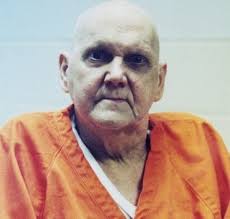The Chess Clock
Before the chess clock or any other timed device, chess matches were long and drawn out. There were deliberate attempts to fatigue and wear out the opponent. The average chess game lasted about nine hours and a single move could take as long as 20 minutes. The 21st match of the Staunton – St. Amant match took 66 moves and 14.5 hours to complete.
After the 1851 London International tournament, players were criticized by the slowness of play. After the tournament, an anonymous contributor to a chess magazine suggested that each player have a three-hour sandglass. When it was the player’s turn, the sandglass would be allowed to flow. When it was the other player’s turn, the first player’s sandglass would be set on its side, and the sandglass of the other player would be allowed to flow. Tassilo von Heydebrand und der Lasa (1818-1889) was one of the first persons to propose that each player’s time should be limited by way of separate clocks.
Sandglasses were first used for time control at London in 1862 in a match between Adolf anderssen and von Kolisch. The time control was 24 moves in two housr. Each player had a sand glass. When it was a player’s move, his sand-glass was set running until a move was completed. After the move, the sandglass was set on its side and his opponent’s sandglass was set running in the same manner.
It was soon discovered that temperature and humidity affected the sand flow, so there was little accuracy in the time. Also, an opponent could accidently turn up the wrong end of the sandglass or even mistakenly turn his opponent’s sandglass.
Another idea was to use two watches and note the time consumed on each move by each opponent. Watches were used in chess events from 1866 to 1873.
In the Paris 1867 tournament, sandglasses were used. Each player was fined 5 francs for every 15 minutes infraction of the regulated time limit of 10 moves per hour.
In 1870 in Baden-Baden, chess timers were first used. The time control was 20 moves per hour. The chess players had the option of using a sandglass or a chess clock.
The first mechanical chess clock (tumbling stop clock) was invented by Thomas Bright Wilson (1843-1915) of Manchester, England in 1883, with advice from Joseph Henry Blackburne . The first time that game clocks were used in a chess tournament was in the London 1883 tournament. Time control was 15 moves in two hours, and if you failed to make the time limit, you forfeited the game. The time piece consisted of two balanced clocks on a seesaw beam so that when one was tilted, it stopped and the other started. The tumbling-clock was manufactured by Fattonini & Sons of Bradford, England.
The first patent for a chess clock was issued in 1884 to Amandus Schierwater of Liverpool. . These clocks were being used by 1886 in most tournaments.
In 1886, Schierwater and Frisch of Liverpool patented a chess clock that showed the ordinary time, but registered on separate dials the period occupied by the players. It also indicated the number of moves in a game and whose turn it was to play. The expiration of time was indicated by the ringing of a bell.
In 1894, tumbler chess clocks were used during the Steinitz-Lasker match for the world championship in New York.
In 1894, a German firm made a chess clock where the clocks were fixed upon a stand, not movable, where a lever was pushed down that stopped one clock and started the other. These clock were made by Gustav Herzog of Leipzig.
In 1895, Theodore Grosse patented a chess timing device using two pendulum clocks with magnets to restrain the inactive pendulum. The pendulum gave away to the balance when over the next 20 years.
The Jaques “Chess Timing Clock” was introduced in the 1890s and sold for 21 shillings.
In 1899, the “flag” mounted on the chess clock was invented by H.D.B.Meijer of Holland. The flag was suspended above the 3rd minute before 12 o’clock and was raised as the minute hand forced it up as approached 12 o’clock. This made it easier to see your time run out when the flag fell. . It took about 20 years before the use of flags became common.
In 1900, the present day push-button clock was first perfected by Veenhoff in Groningen, the Netherlands.
In 1950, Borcherdt GmbH or BHB, was established in Germany and became the leading manufacturer of chess clocks in the world. The company lasted until 1989.
In 1964, the first electronic chess clock was manufactured by a Russian firm, the Kiev Relay and Automatic Works..
In 1973, Bruce Chaney created the first digital chess clock for an undergraduate Electrical Engineering course at Cornell University.
In 1975, the first patent was granted to Joe Meshi on a fully operational, microprocessor-based, digital chess clock.
In 1985, the first DGT (Digital Games Technology) digital chess clock was built by Ben Bulsink
In 1988, Bobby Fischer filed for a patent on a new type of digital chess clock that gives each player a fixed period of time at the start of the game and then adds a small amount of time after each move. He used his Fischer clock in his 1993 match with Boris Spassky. Prior to the match, a working model had never been constructed. A Fischer chess clock was made for the event in five days.
Digital clocks were not significant until the mid 1990s, when delay and increment were introduced to tournament play.
In 1996, the US Chess Federation came out with their first digital chess clock that could use delay.
In 1996, the Excalibur GameTime chess clock was introduced.




Comments
Post a Comment